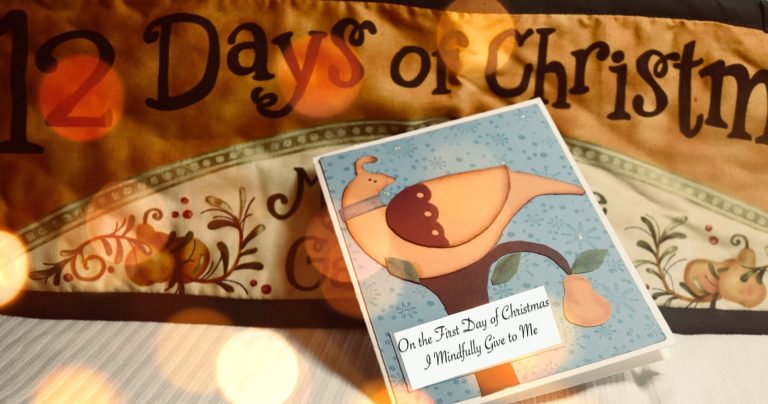Minding an Idea V: Cultivating Compassion
(in honor of my mom and compassionate people everywhere) – Tina Geithner, Ph.D.
Earlier, in Minding an Idea III, self-compassion was defined as the practice of offering ourselves acceptance, kindness, and care. It is the foundation for developing and holding compassion towards others and an opportunity to act out of acceptance, kindness, and care. Compassion refers to the sympathetic understanding of another person’s pain – a feeling or bearing with – and the action that stems from that feeling inspired by the desire to mitigate that pain. It involves an intentional way of considering and relating to our fellow human beings in a way that fosters connection rather than divisiveness, love rather than “otherness” or hate. Compassion sees through the illusion of separation – the notion that we are more different than alike.
This reminds me of a multi-part exercise that Alan Seale has used with participants in his Transformational Presence Leadership and Coach Training. It goes something like this…In the first round, participants [we} are invited to move about the room for a few minutes noticing physical objects in the room that are not like them [us] – things that are different, with which we don’t share something in common – and say to ourselves “Not like me”. Then we are invited to do the exercise a second time noticing things about people that are not like us (with whom we don’t share something in common – on a surface, observable level or, if there is more knowing about the person, on a deeper non-observable layer), and to say to themselves “Not like me”. Then we are invited to share the experience (e.g., thoughts, emotions, sensations, insights, energy, etc.) that the iterations of the exercise produced in us. In the next round, we are invited to repeat the exercise and to note things and people in the room with which/whom we share something in common and say to ourselves “Like me”. The last rounds involve bringing to mind one of our greatest joys in life, moving about the room, stopping to meet each other eye-to-eye and be present with each other person saying to ourselves, “Me”. Then we bring to mind one of our greatest sorrows in life and do the same thing… moving about the room, stopping to meet each other eye-to-eye and be present with each other and saying to ourselves, “Me”. Then we are invited to share our experiences of what the last rounds of the exercise produced in us.
You can try this exercise the next time you are in the grocery store, mall, airport or other public place and notice the experience (e.g., thoughts, emotions, sensations, insights, energy, etc.) that seeing things and other people through the lenses of “Not like me”, “Like me”, and “Me” evokes in you. What experience does seeing “otherness” create for you? What does recognizing our common human experiences of joy and sorrow in our lives evoke in you? Chances are you will be aware of a profound difference. Henry David Thoreau (1817-1862) wrote, “It’s not what you look at that matters, it’s what you see.” Or to paraphrase, it’s not what we see, but how we see that makes the difference in our experience. We can cultivate compassion for others by how we direct our attention, intentionally, non-judgmentally, and with acceptance, kindness, and care.
In the silence of listening, you can know yourself in everyone, the unseen singing softly to itself and to you. –Rachel Naomi Remen
In minding our common human-ness, our struggles, sorrows, and joys, we can shift our tendency to support the illusion of separateness into a more compassionate way of being with each other. When we look through the lenses of lovingkindness rather than “otherness”, we send out ripples of compassion – something the world needs now more than ever. To paraphrase a quote from Hillel the Elder, a Jewish religious leader who lived in the first century, If not us, who? If not now, when?
May we live like this.
May we see each other for who we are, for what we are.
May we face each other,
Seeing and being seen.
Loving and being loved.
May we see all of each other.
May we see all of us.
May we be seen.
- Omid Safi, The Power of Being Seen for Who We Are (https://onbeing.org/blog/omid-safi-the-power-of-being-seen-for-who-we-are/ , July 5, 2017)
Here are a few links to and directions for meditations on lovingkindness:
- Brach, Tara. 2018. Guided Meditation – Metta Practice: https://www.tarabrach.com/guided-meditation-metta-practice/ (30:53 min).
- Kornfield, Jack. 2018. Meditation on Compassion: https://jackkornfield.com/meditation-on-compassion/
May I be held in compassion.
May my pain and sorrow be eased.
May I be at peace.
May you be held in compassion.
May your pain and sorrow be eased.
May your heart be at peace.
- Kornfield, Jack. 2018. Meditation on Lovingkindness: https://jackkornfield.com/meditation-on-lovingkindness/
May I be filled with lovingkindness.
May I be safe from inner and outer dangers.
May I be well in body and mind.
May I be at ease and happy.
May you be filled with lovingkindness.
May you be safe from inner and outer dangers.
May you be well in body and mind.
May you be at ease and happy.





